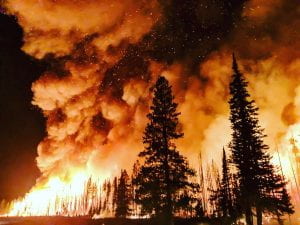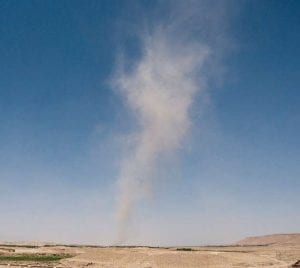
Uncontrollable wildfire. Credits: rawpixel
This year in California, over 6,100 wildfires have burned more land than the size of Los Angeles. As climate change creates warmer, drier conditions, the frequency and intensity of wildfires has increased. Wildfires also lead to secondary effects such as lower water and air quality, erosion, and landslides. It’s not just a California thing. Wildfires are devastating communities all over the world.
Fighting these wildfires is a taxing job. At California’s primary firefighting service, Cal Fire, firefighters used to take shifts watching more than a thousand live video feeds for signs of smoke or fire. It was painstaking work.
Not anymore. Now Cal Fire’s firefighters get to sleep through the night. Why? AI is watching the cameras instead.
How can artificial intelligence (AI) be used in wildfire prevention?
AI wildfire prevention technology starts with training an AI model using computer vision machine learning. This means the model’s creators give the model thousands of pictures of smoke and fire to learn from, as well as images of things that look similar but aren’t (like dust clouds or smoke from a backyard barbeque).
The AI model that Cal Fire uses has more than a thousand cameras that can each see up to 60 miles during the day and 120 miles at night. The AI monitors real-time smoke and heat sensors and historical wildfire data. Overall, the AI system is receiving billions of pieces of visual and sensor data at any given moment.
The goal of this AI system is to process this data in realtime to identify abnormalities for firefighters.
How well does Cal Fire’s AI system work?
It works very well. Cal Fire’s AI system accurately alerts firefighters earlier than 911 calls 40% of the time. More than that, in the past three months, the system has detected dozens of fires that no one called into 911 at all.
This has improved firefighter response times, meaning more fires get extinguished before they can grow into wildfires. Stopping wildfires early also prevents their secondary effects.
All of this is why firefighters are sleeping better. AI does the realtime monitoring so that firefighters are less fatigued and better prepared to fight wildfires.
Is there a downside to Cal Fire’s AI system?

A dust cloud, which could look like smoke to AI. Credits: PICRYL
Cal Fire’s AI system has been tricked before by things that aren’t smoke, such as haze, dust, and steam. The good news is that AI systems get more ‘intelligent’ over time, but accuracy cannot be 100% guaranteed.
In Cal Fire’s AI system’s early stages, it only worked for fires visible to their cameras. Although their cameras cover about 90% of their fire-prone land, that still left gaps. Luckily, the US military now lets Cal Fire use their spy satellites, drones, and other aircrafts to expand coverage.
There is also the question of the expansion of the surveillance state. When AI is watching through fire detection cameras, is it watching for anything else?
What is the future of AI in wildfire prevention?
Not every firefighting agency uses cameras, so they can’t all use an AI system like Cal Fire’s. If they want the benefits of AI, they’ll need a new system. Luckily, people are already starting to work on strategies for the future that account for this.
Microsoft is in the process of creating AI models with climate, geospatial, and burn data to predict likely wildfire locations. They plan to open this technology to all first responders.
Canada plans to enhance their existing AI wildfire prevention systems by installing sensors in the ground to monitor soil and weather conditions. This works with or without cameras and will allow their AI systems to better predict wildfires before they happen.
A German startup called OroraTech is pursuing the new strategy of launching low orbit mini satellites that use AI to analyze satellite images for smoke or fire. OroraTech was already helpful to Chile during their intense period of wildfires this year by providing thermal imaging during the night when wildfire spotting drones are less active. This strategy could be scaled up.
Pano AI is putting cameras on cell towers, which are common fire starters. In the future, this system could be expanded to include cameras on other fire hazards. Pano AI also analyzes data from social media posts and hotspot-detecting weather satellites. Both of these ideas can be expanded. Pano AI’s help is cutting up to two hours off of firefighter response times.
These strategies will help make AI wildfire prevention systems more robust and flexible for different users. These systems will keep improving their speed and accuracy, and they will have to in order to keep up with climate change. While technology continues advancing, wildfires continue to get more threatening. That means furthering the development of tools like AI to limit wildfires is becoming a necessity.